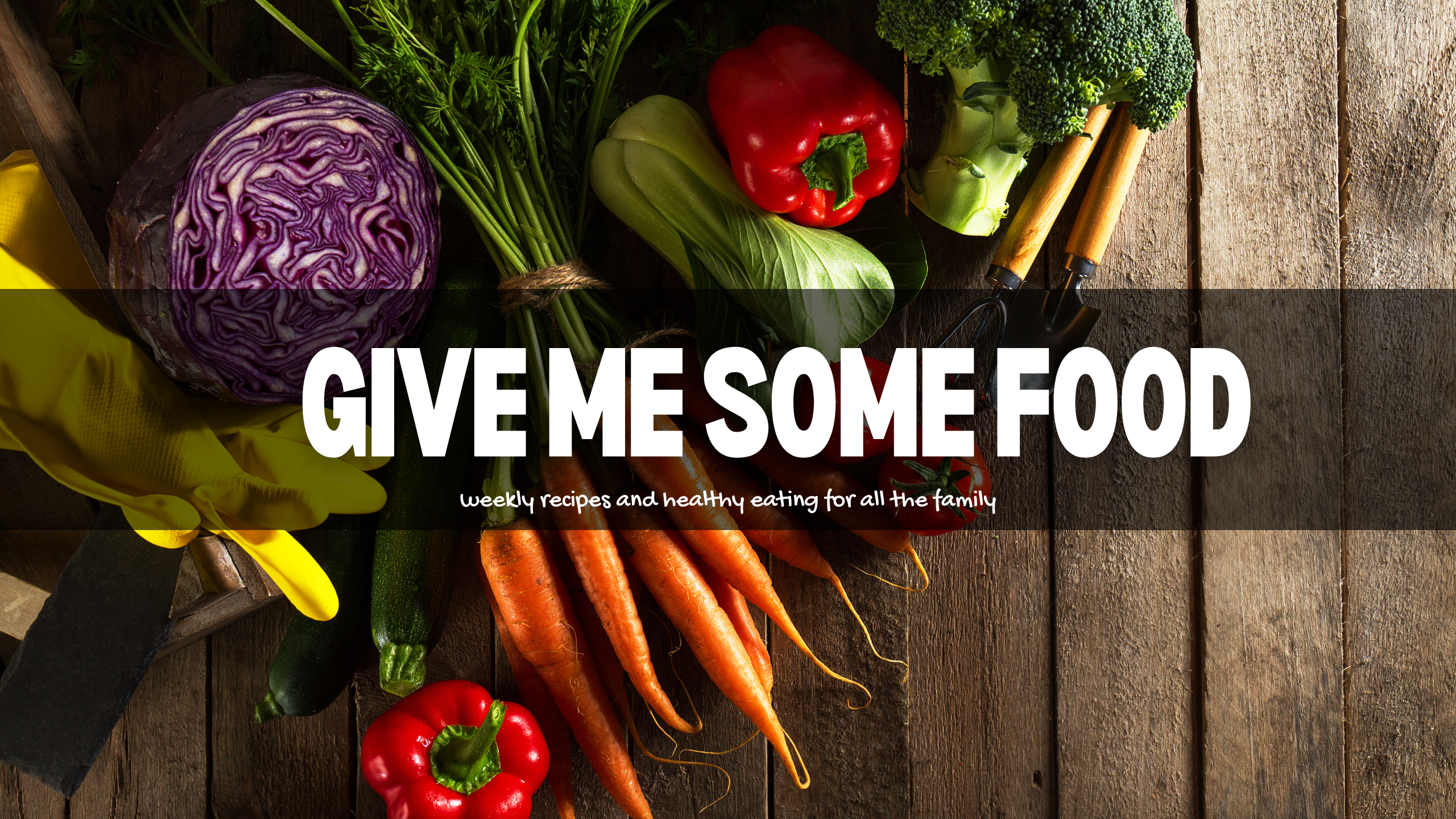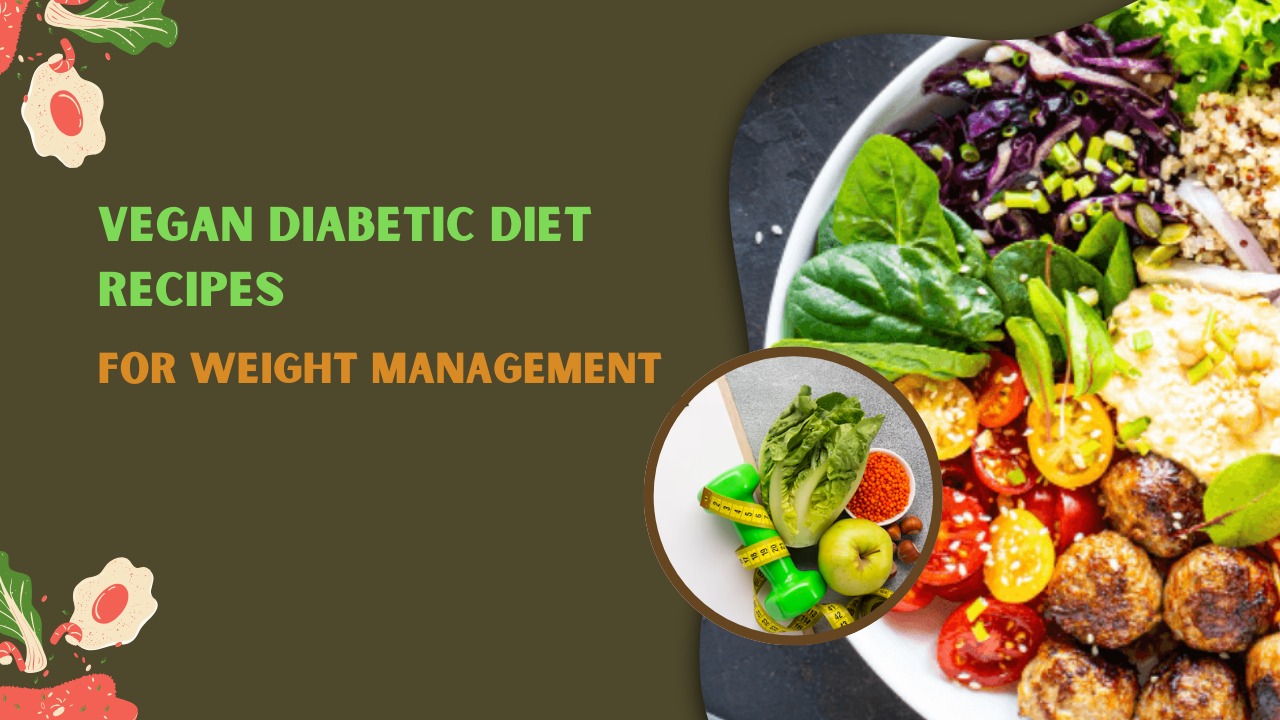Vegan diabetic diet recipes offer a flavorful and effective way to manage blood sugar without compromising on taste or variety. Living with diabetes no longer means bland meals or strict limitations. In fact, combining a vegan lifestyle with diabetic-friendly principles allows for nutrient-dense, delicious meals that support long-term health.
A well-planned vegan diabetic diet focuses on whole, plant-based foods such as vegetables, legumes, whole grains, nuts, and seeds. These are naturally high in fiber and low in saturated fats, helping regulate glucose levels while improving heart health and aiding weight control. Avoiding refined sugars and processed carbs is key.
With countless vegan diabetic diet recipes available, it’s easier than ever to enjoy balanced meals that nourish your body and manage diabetes effectively. Whether it’s a chickpea stir-fry, quinoa salad, or lentil soup, plant-based eating can become both a practical and satisfying choice for diabetics seeking better health and energy.
In this article, we’ll cover everything you need to know about the vegan diabetic diet: what it is, why it works, how to implement it, and when to eat for optimal blood sugar control. You’ll also discover 8 essential tips, complete with sample recipes and ingredients, that will help you create balanced, satisfying, and diabetes-friendly vegan meals.
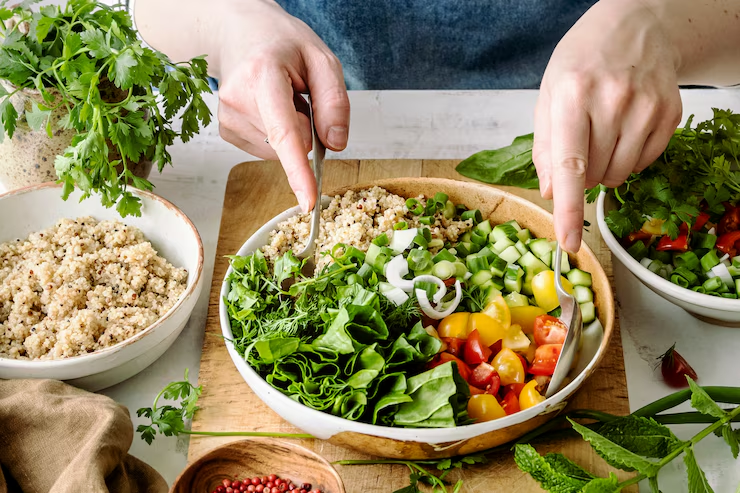
What Is a Vegan Diabetic Diet ?
A vegan diabetic diet is a plant-based nutritional approach that eliminates all animal products—including meat, dairy, eggs, and honey—and is specifically designed to manage blood sugar levels. It emphasizes:
Whole grains
Legumes
Fruits and vegetables
Nuts and seeds
Healthy fats (e.g., avocado, olive oil)
This diet excludes foods that can spike blood sugar or lead to insulin resistance, such as:
Refined carbohydrates
Sugary drinks
Highly processed vegan snacks
Trans fats and fried foods
Types of Diabetes and Relevance of a Vegan Diet
Type 1 Diabetes: Autoimmune condition where the body doesn’t produce insulin. A vegan diet can still help manage overall health and reduce cardiovascular risks.
Type 2 Diabetes: Caused by insulin resistance, often linked to obesity and lifestyle. A vegan diet can significantly improve insulin sensitivity and may even reverse Type 2 diabetes in some cases.
Why Choose a Vegan Diet for Diabetes ?
Lower Blood Sugar Levels: High-fiber foods slow the absorption of sugar into the bloodstream.
Weight Management: Vegan diets are often lower in calories and fat, promoting weight loss.
Reduced Insulin Resistance: Plant-based eating has been shown to improve how the body uses insulin.
Lower Cholesterol: Vegan diets help reduce LDL cholesterol, lowering the risk of heart disease.
Anti-inflammatory: Whole plant foods reduce inflammation, a common issue in diabetics.
When and How to Eat for Blood Sugar Control
Vegan diabetic diet recipes are most effective when paired with proper timing and mindful eating habits. Eating at consistent intervals throughout the day helps prevent spikes and crashes in blood sugar, making it easier for your body to manage glucose levels. Skipping meals or eating irregularly can disrupt insulin activity and lead to energy imbalances.
How you eat is just as important. Slow, mindful eating gives your body time to signal fullness, helping with portion control and preventing overeating. Choose high-fiber vegan foods like lentils, oats, and leafy greens that digest slowly and provide steady energy. These are staples in many well-balanced vegan diabetic diet recipes.
Combining meal timing with thoughtful food choices enhances blood sugar control. Eating smaller, balanced meals every 3–4 hours—rather than large, spaced-out ones—can support insulin function and metabolism. Following vegan diabetic diet recipes with consistent habits helps maintain stable glucose levels and supports long-term health.
Meal Timing: Eat at consistent intervals (every 3-5 hours) to avoid blood sugar spikes and crashes.
Balanced Plates: Always combine complex carbs with protein and healthy fats.
Portion Control: Use a smaller plate and avoid oversized portions, especially with carbs.
Hydration: Drink plenty of water throughout the day to help regulate glucose levels.
Avoid Nighttime Overeating: Keep dinners light and low in carbs to promote stable overnight glucose.
Top Vegan Diabetic Diet Tips with Recipes
Let’s dive into the most effective strategies for managing diabetes with a vegan diet. These tips will help you build better habits and prepare delicious, blood sugar-friendly meals.
Choose Low-Glycemic Index (GI) Foods
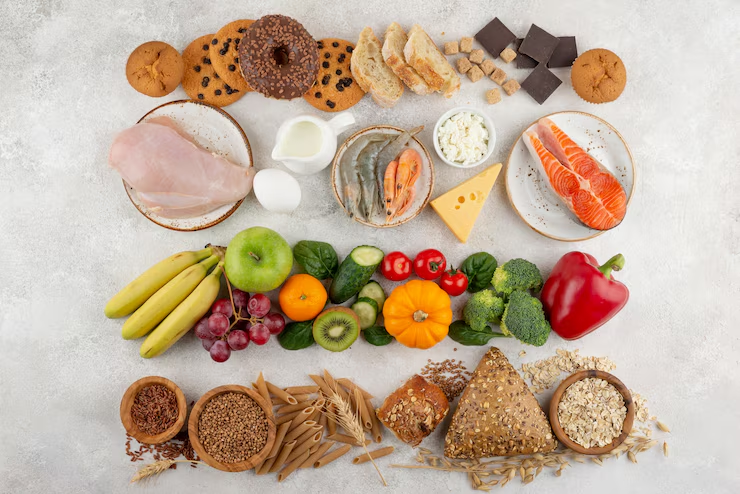
Vegan diabetic diet recipes should prioritize low-glycemic index (GI) foods to help manage blood sugar levels effectively. Low-GI foods release glucose slowly into the bloodstream, preventing sudden spikes and crashes that can be harmful for individuals with diabetes. Common low-GI vegan options include lentils, chickpeas, sweet potatoes, quinoa, and most non-starchy vegetables.
Incorporating these foods into your daily meals can provide long-lasting energy and support better insulin sensitivity. For instance, swapping white rice with quinoa or opting for steel-cut oats instead of instant oatmeal are small changes that have a big impact. Many vegan diabetic diet recipes are designed around these smart food choices.
Eating a variety of low-GI, fiber-rich plant foods also supports digestive health and weight control. Pairing them with healthy fats and plant-based proteins further balances blood sugar. With the right ingredients, vegan meals can be both satisfying and suitable for blood sugar management.
The glycemic index ranks foods based on how quickly they raise blood sugar. Low-GI foods release glucose slowly, helping maintain stable levels.
Best Choices:
Lentils
Quinoa
Oats
Sweet potatoes
Non-starchy vegetables
Recipe: Sweet Potato & Chickpea Buddha Bowl
Ingredients:
1 cup roasted sweet potatoes
½ cup cooked quinoa
½ cup chickpeas
1 cup spinach
1 tbsp tahini
Lemon juice, salt, pepper
Benefits:
High in fiber and protein
Low-GI carbs
Keeps you full longer
Focus on Fiber-Rich Foods
Vegan diabetic diet recipes should emphasize fiber-rich foods, as fiber plays a crucial role in managing blood sugar levels. Dietary fiber slows down the digestion and absorption of carbohydrates, which helps prevent blood sugar spikes after meals. This is especially important for individuals with diabetes, as stable blood glucose levels are key to long-term health.
Excellent vegan sources of fiber include lentils, black beans, chickpeas, oats, chia seeds, flaxseeds, leafy greens, and whole fruits like apples and berries. These foods not only aid in blood sugar regulation but also support heart and digestive health. Many vegan diabetic diet recipes incorporate these ingredients into hearty soups, salads, and plant-based bowls.
Eating enough fiber can also enhance satiety, reducing the urge to snack on high-sugar or processed foods. Including a variety of fiber-rich vegetables and legumes in every meal is a smart strategy for anyone following a vegan diabetic eating plan.
Fiber slows digestion and prevents blood sugar spikes. Aim for at least 25–30g of fiber per day from plant sources.
Best Sources:
Black beans
Chia seeds
Flaxseeds
Broccoli
Whole grains
Recipe: Chia Pudding with Berries
Ingredients:
3 tbsp chia seeds
1 cup unsweetened almond milk
½ cup fresh blueberries
½ tsp cinnamon
Benefits:
Stabilizes blood sugar
Rich in omega-3s and antioxidants
Great for breakfast or dessert
Add Plant-Based Proteins to Every Meal
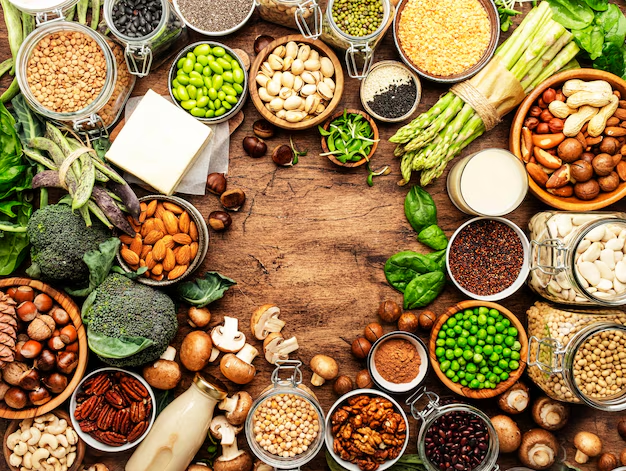
Vegan diabetic diet recipes thrive on balance, and one key component is adding plant-based proteins to every meal. These proteins not only help stabilize blood sugar levels but also support muscle maintenance and satiety. Great sources include lentils, chickpeas, tofu, tempeh, edamame, and quinoa—all staples in a diabetic-friendly vegan kitchen.
Unlike animal proteins, plant-based sources are typically lower in saturated fats and cholesterol, making them heart-healthy and easier on the kidneys. Incorporating them into every meal ensures a steady release of glucose into the bloodstream, helping prevent spikes and crashes in energy levels. Try a lentil stew for lunch or grilled tofu with roasted vegetables for dinner.
With countless vegan diabetic diet recipes available, it’s easy to enjoy variety while meeting your nutritional needs. Make plant-based proteins a foundation of your meals to enjoy long-term health benefits, better blood sugar control, and delicious, satisfying dishes that align with a mindful lifestyle.
Protein supports blood sugar control and helps prevent muscle loss, especially in people managing diabetes.
Best Vegan Proteins:
Tofu and tempeh
Lentils
Edamame
Seitan
Hemp seeds
Recipe: Tempeh Stir-Fry
Ingredients:
1 block tempeh, sliced
2 cups mixed vegetables (broccoli, bell peppers, carrots)
2 tbsp soy sauce
1 tbsp sesame oil
Garlic, ginger
Benefits:
Low in carbs
Rich in complete protein
Easy and quick to make
Use Healthy Fats to Improve Satiety
Vegan diabetic diet recipes can be both satisfying and blood sugar-friendly when they include healthy fats. Fats play a key role in satiety, helping you feel full longer and reducing the temptation to snack on sugary or processed foods. Unlike unhealthy trans fats, healthy fats support heart health, which is especially important for individuals with diabetes.
Great sources of healthy plant-based fats include avocados, chia seeds, flaxseeds, walnuts, and olive oil. These can be added to salads, smoothies, or cooked dishes to enhance both flavor and nutritional value. For example, a salad with avocado slices and a flaxseed oil dressing is not only filling but also nutrient-dense.
Incorporating the right kind of fats in vegan diabetic diet recipes helps maintain steady blood sugar levels and supports overall well-being. By making smart fat choices, you enhance your meals without compromising on taste or health, creating a sustainable approach to vegan diabetic eating.
Healthy fats help manage hunger and support brain and heart health—important for people with diabetes.
Good Vegan Fat Sources:
Avocados
Nuts and nut butters
Seeds (chia, flax, pumpkin)
Olive oil
Coconut (in moderation)
Recipe: Avocado Chickpea Salad
Ingredients:
1 ripe avocado
1 cup mashed chickpeas
1 tbsp olive oil
Red onion, parsley, lemon juice
Benefits:
Keeps you full
Provides essential fatty acids
Great for lunch or snack
Watch Your Carbohydrate Portions
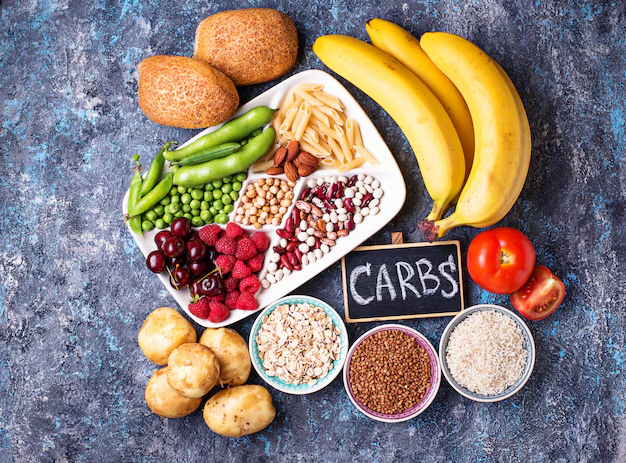
Vegan diabetic diet recipes should carefully balance carbohydrate portions to maintain stable blood sugar levels. Carbohydrates have the greatest impact on glucose, so it’s essential to choose the right types and control the amounts. Portion control doesn’t mean avoiding carbs altogether—it means being mindful about what and how much you eat.
Whole grains like quinoa, oats, and brown rice, along with legumes and starchy vegetables, can be part of a healthy vegan diabetic diet. However, measuring portions and spreading carb intake throughout the day helps prevent spikes in blood sugar. For instance, swapping white rice for half a cup of cooked quinoa offers more fiber and a lower glycemic load.
Incorporating portion-controlled carbs into your vegan diabetic diet recipes ensures meals are satisfying without overloading your system. By staying aware of serving sizes and pairing carbs with protein and fiber, you can enjoy a balanced diet that supports your health goals.
Even healthy carbs can cause issues if consumed in excess. Learn to count and balance your carbs wisely.
Smart Carbohydrate Swaps:
Use spiralized zucchini instead of pasta
Swap white rice for cauliflower rice
Try legume-based pasta
Recipe: Zucchini Noodle Bowl
Ingredients:
2 zucchinis, spiralized
1 cup cherry tomatoes
½ cup white beans
Basil, garlic, olive oil
Benefits:
Low in carbs
Nutrient-dense
Supports weight loss
Avoid Added Sugars and Refined Grains
Vegan diabetic diet recipes should eliminate added sugars and refined grains to help manage blood sugar levels effectively. Foods like white bread, pastries, sweetened cereals, and desserts can cause rapid glucose spikes, making it harder to control diabetes. Even seemingly healthy options like flavored plant-based yogurts may contain hidden sugars.
Instead, choose whole food alternatives such as brown rice, quinoa, oats, and whole wheat flour in your cooking. Natural sweeteners like dates or a small amount of stevia can be used in moderation for taste without sacrificing blood sugar control. These swaps not only reduce the glycemic load but also increase fiber and nutrients in your meals.
Removing processed sugars and refined grains from your vegan diabetic diet recipes supports better energy levels, satiety, and long-term health. With a bit of creativity and planning, you can enjoy delicious, satisfying meals that are kind to your blood sugar and your overall wellness.
Sugary drinks, snacks, and white bread cause quick glucose spikes. Replace with whole food alternatives.
Sugar-Free Snack Ideas:
Apple slices with almond butter
Roasted chickpeas
Homemade granola bars (no added sugar)
Recipe: No-Sugar Energy Bites
Ingredients:
1 cup rolled oats
½ cup almond butter
2 tbsp flaxseed meal
¼ cup chopped dates
1 tsp vanilla
Benefits:
Natural sweetness
High fiber and protein
Change block type or style
Move Heading block from position 157 up to position 156
Move Heading block from position 157 down to position 158
Change alignment
Change text alignment
Displays more block tools
Great for pre- or post-workout
Stay Hydrated with Low-Sugar Drinks
Vegan diabetic diet recipes go beyond food—they also include smart beverage choices. Staying hydrated is essential for managing blood sugar levels, supporting kidney function, and promoting overall health. However, not all drinks are created equal, especially for individuals with diabetes.
Avoid sugary beverages like sodas, sweetened juices, and high-carb energy drinks, as they can cause sharp spikes in blood glucose. Instead, opt for low-sugar or naturally sugar-free options such as herbal teas, infused water with lemon or cucumber, or unsweetened almond milk. These drinks provide hydration without adding extra carbs.
Incorporating healthy hydration habits into your vegan diabetic diet recipes ensures a well-rounded approach to diabetes management. Drinking 6–8 cups of appropriate fluids daily helps regulate metabolism and digestion while keeping you energized and focused. Remember, what you drink is just as important as what you eat when crafting a diabetic-friendly vegan lifestyle.
Dehydration can raise blood sugar. Avoid sodas and fruit juices; choose water, herbal teas, and infused waters.
Infused Water Ideas:
Cucumber + mint
Lemon + ginger
Berries + basil
DIY Diabetic-Friendly Smoothie
Ingredients:
½ avocado
1 cup spinach
1 tbsp chia seeds
½ cucumber
1 cup unsweetened almond milk
Ice cubes
Benefits:
Green and clean
Blood sugar-stabilizing ingredients
Packed with fiber and healthy fats
Practice Meal Prepping and Mindful Eating
Vegan diabetic diet recipes are most effective when paired with mindful eating and meal prepping. Planning your meals in advance helps maintain stable blood sugar levels and prevents last-minute unhealthy food choices. It also ensures balanced nutrition with the right portions of carbs, proteins, and healthy fats.
Meal prepping involves cooking in bulk, storing meals properly, and rotating dishes to avoid monotony. This is especially useful for diabetics, as it allows better control over ingredients like salt, sugar, and unhealthy fats. You can portion whole grains, legumes, and vegetables ahead of time for easy, balanced meals.
Mindful eating encourages you to slow down and pay attention to hunger cues, leading to better portion control and digestion. By combining meal prepping with intentional eating habits, vegan diabetic diet recipes become not only manageable but enjoyable—helping you stay consistent, avoid blood sugar spikes, and build a healthy, sustainable routine.
Planning ahead reduces the chance of grabbing processed or sugary foods. Mindful eating helps you notice hunger cues and prevents overeating.
Meal Prep Tips:
Cook grains and legumes in bulk
Keep chopped veggies ready
Store homemade sauces or hummus
Use portion containers
Recipe: Vegan Lentil Curry (Batch Cooking)
Ingredients:
1 cup dry brown lentils
1 can coconut milk (light)
1 tbsp curry powder
1 onion, garlic, ginger
1 cup spinach
Benefits:
Can be frozen or refrigerated
Balanced macronutrients
Full of flavor without sugar
Conclusion
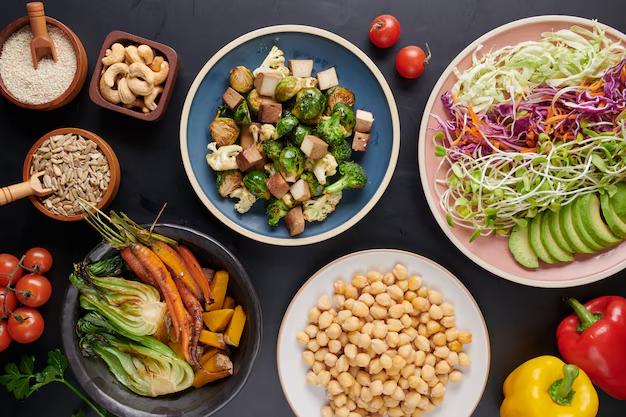
Vegan diabetic diet recipes offer more than just blood sugar management—they provide a foundation for a vibrant and sustainable lifestyle. By focusing on whole, plant-based foods such as vegetables, legumes, whole grains, nuts, and seeds, individuals with diabetes can nourish their bodies while keeping glucose levels in check.
Following the 8 practical tips shared in this guide, anyone can create flavorful and balanced meals that support heart health, weight control, and long-term wellness. These vegan diabetic diet recipes are naturally rich in fiber, antioxidants, and healthy fats while being low in saturated fat and added sugars, making them ideal for diabetes management.
Whether you’re newly diagnosed or looking to revamp your eating habits, this approach empowers you to eat with purpose and variety. The key is consistency—understanding your body, planning meals wisely, and enjoying every bite while prioritizing your health through a thoughtful vegan diabetic eating plan.
FAQs
Q1. What are the best vegan diabetic diet recipes for beginners ?
Vegan diabetic diet recipes for beginners often include simple meals like lentil soup, vegetable stir-fry with tofu, or quinoa salad with chickpeas. These meals are rich in fiber and low in refined carbs, making them ideal for blood sugar control.
Q2. Can I get enough protein from vegan diabetic diet recipes ?
Yes, you can! Vegan diabetic diet recipes use plant-based proteins such as lentils, beans, tofu, tempeh, and quinoa, which are excellent sources of protein while also being blood sugar friendly.
Q3. Are fruits allowed in vegan diabetic diet recipes ?
Fruits like berries, apples, and citrus are commonly included in vegan diabetic diet recipes in moderation. These fruits have lower glycemic indexes and are rich in fiber and antioxidants.
Q4. How often should I eat using vegan diabetic diet recipes ?
Eating small, balanced meals every 3–4 hours using vegan diabetic diet recipes can help keep your blood sugar levels stable throughout the day.
Q5. Are vegan diabetic diet recipes good for weight loss ?
Absolutely! Vegan diabetic diet recipes are typically low in saturated fat and high in fiber, which can support healthy weight loss while managing blood sugar effectively.
